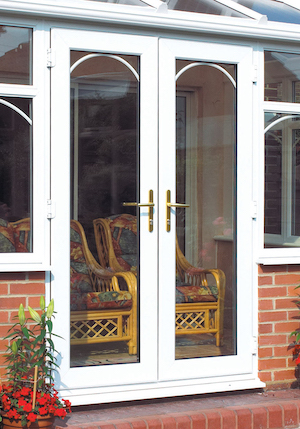
French Door Hinges
Add a review FollowOverview
-
Founded Date February 24, 1980
-
Sectors Software Development
-
Posted Jobs 0
-
Viewed 9
Company Description
The 10 Most Terrifying Things About French Door Replacement
French Door Replacement: A Comprehensive Guide
French doors are a popular choice amongst house owners for their aesthetic appeal and ability to improve natural light in a space. However, like any home function, they might require replacement over time. Elements such as wear and tear, shifting climate needs, and modifications in personal style can lead to the requirement for brand-new French doors. This article provides an informative summary of French door replacement, detailing when to replace them, the types available, actions in the replacement process, prospective costs, and regularly asked concerns.

When to Consider French Door Replacement
Changing French doors may end up being essential for several reasons, consisting of:
- Damage: Cracks, warping, and broken hardware can compromise performance and security.
- Energy Efficiency: Outdated doors might not supply appropriate insulation, causing increased energy costs.
- Aesthetic Changes: Home restorations or changes in personal taste can trigger the desire for brand-new doors.
- Functionality Issues: Difficulty in opening or closing, or a lack of smooth operation might signify it’s time for replacement.
Indications Your French Doors Need Replacement:
- Water damage or rot in wood frames
- Draughts even when doors are closed
- Trouble in locking or sticking doors
- Visible indications of wear such as peeling paint or rust
- Condensation between double-glazed panes
Types of French Doors
When considering replacement, homeowners have a number of alternatives offered:
-
Material Types:
- Wood: Classic, standard look with excellent insulation however requires routine maintenance.
- Fiberglass: Durable and energy-efficient, simulating the look of wood without the maintenance.
- Vinyl: Low maintenance with energy-efficient properties, often readily available in different colors.
-
Styles:
- Swinging French Doors: Open inward or outside, perfect for broad openings.
- Sliding French Doors: Convenient for smaller sized areas, smoothly move open on a track.
- Multi-Panel French Doors: Feature several panels for an expansive view and modern appeal.
-
Glass Types:
- Single-pane: Basic and affordable however less energy-efficient.
- Double-pane: Improved insulation; suggested for energy preservation.
- Tempered Glass: Safety glass that resists breakage.
Steps for Replacing French Doors
Changing French doors needs extensive preparation and execution. Below is a detailed guide:
1. Measuring the Door Frame
Precise measurements of the opening are essential to ensure the new doors fit properly. Measure the height and width of the frame and the density of the existing door.
2. Picking the Replacement Doors
Pick the type of French door that matches your home’s design and your budget plan. Think about materials, designs, and hardware options while making the selection.
3. Getting Rid Of the Old Doors
Thoroughly eliminate the current doors and dismantle the hardware. Be mindful not to damage the frame throughout this process.
4. Preparing the Frame
Inspect the door frame for damage and make necessary repairs. Ensure the frame is square and level, as this will impact the installation of the new doors.
5. Installing the New Doors
- Place the New Doors: Set the brand-new French doors in the frame, guaranteeing they fit comfortably.
- Level and Secure: Use shims to level the doors. Protect the doors with screws, guaranteeing that hinges are correctly lined up.
- Set up Hardware: Attach handles, locks, and other hardware.
6. Completing Touches
Seal around the edges with caulk to avoid drafts and improve energy performance. If the doors are wooden, consider finishing or painting them.
7. Evaluating
Open and close the doors multiple times to guarantee smooth operation and proper alignment.
Expense of French Door Replacement
The cost of changing French doors differs based on materials, design, and labor. Below is a table summing up the approximated costs associated with different types of French doors:
| Type of Door | Average Cost (Material Only) | Installation Cost Range | Total Estimated Cost |
|---|---|---|---|
| Wood | ₤ 400 – ₤ 2,000 | ₤ 200 – ₤ 500 | ₤ 600 – ₤ 2,500 |
| Fiberglass | ₤ 600 – ₤ 2,500 | ₤ 200 – ₤ 500 | ₤ 800 – ₤ 3,000 |
| Vinyl | ₤ 300 – ₤ 1,500 | ₤ 200 – ₤ 500 | ₤ 500 – ₤ 2,000 |
Note: Costs might vary based on place, brand name, and specifics of the installation task.
Frequently Asked Questions About French Door Replacement
Q: How long does it take to replace French doors?A: The replacement
procedure usually takes a couple of hours to a day, depending on the complexity of the task and if additional repairs are needed.
Q: Are French doors energy efficient?A: Modern French doors,
especially those with double-pane glass and proper sealing, can be really energy efficient. Q: Can I set up French doors myself?A: While DIY installation is possible for skilled house owners, hiring a professional is encouraged to guarantee a proper fit and finish, especially if adjustments to the frame are necessary. Q: What is the average lifespan of French doors?A: With proper maintenance, French doors can last anywhere from 15 to 30
years, depending upon the material and ecological conditions. French door replacement enhances a home’s performance and appeal. By understanding when to replace them, what alternatives are offered, and how to go about the installation, house owners can make informed decisions that include value and charm to their living spaces. With appropriate care, brand-new French doors can offer years of service, comfort, and design.


